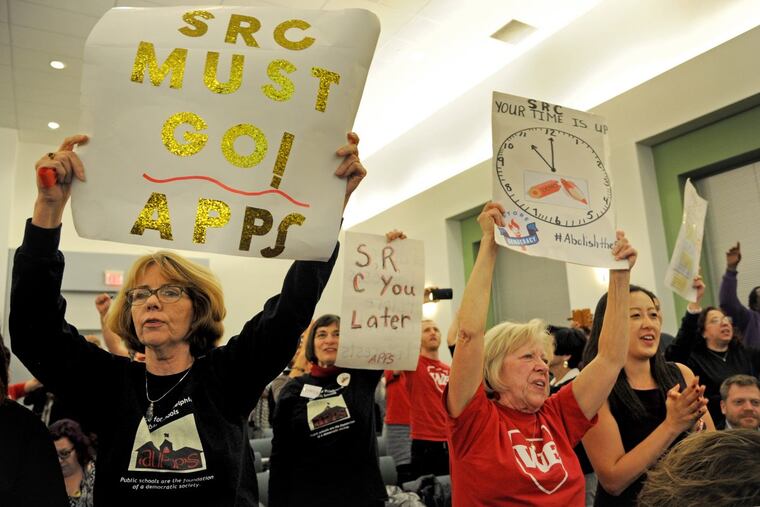Philadelphia takes control of schools, but state still owes pupils
The Pennsylvania Legislature has failed to meet its obligation to make sure schools are adequately and equitably funded.

Mayor Kenney said he wanted to end state oversight of the School District of Philadelphia as a necessary step toward reclaiming local control of our public schools. Now, with the action by the School Reform Commission to disband, control of the schools will be placed in local hands.
This move is overdue. It's time for our city to take ownership.
Putting the school district under the direct control of the mayor allows for a central point of accountability. Evidence from other cities shows that performance increases with direct accountability.
Under local control, the city can better integrate new services into the schools. Counselors, health professionals, librarians, school building repairs, and more can be provided for the schoolchildren. That's a good thing, because our children deserve more.
Be clear, local control does not take the state off the hook for properly funding schools. This is the fundamental issue. No matter who controls, the state has the constitutional responsibility to fund the schools adequately and equitably.
The School District of Philadelphia, like other school districts throughout Pennsylvania, faces a legacy of underfunding from the state. Generations of students have suffered because state officials refuse to see all Pennsylvania students as equal.
In my senatorial district, which covers portions of the city and affluent suburbs, a school district boundary line could be the difference between a child learning in a state-of-the-art building with the newest technology or in a building with heating problems and outdated textbooks. That's wrong.
In fact, there are school districts in my senatorial district where they spend nearly $10,000 more per pupil than in Philadelphia. That's not adequate, and it sure isn't equitable. Among some notable figures:
The School District of Philadelphia was underfunded by $4,184 per student;
The average annual total funding needed per student in 2005-06 in Pennsylvania was $12,057, but the average per-student amount spent was $9,512;
An average increase of $2,545 per student per year is needed for all students to reach Pennsylvania's academic proficiency and performance expectations;
Initial progress under the Rendell administration to close the gap was derailed by the 2011 cuts instituted by then-Gov. Corbett, and the paltry budget investments during the following three years. More than a decade later, the funding adequacy gap has remained unchanged. A 2016 analysis from the Public Interest Law Center put the current adequacy gap between $3 billion and $4 billion.
Moreover, the Philadelphia district released a report in January 2017 that demonstrated a need for $5 billion to fix the school facilities in its inventory. Appropriate state school funding could have prevented the necessity for a massive investment in repairs.
Tellingly, the United States Department of Education reported that Pennsylvania's school funding system is the most unequal system of all 50 states.
Regardless of who controls the Philadelphia schools, the fundamental issue is whether they are adequately and equally funded by the state. Clearly, they have not been. The state must fix this generational problem that discriminates against low-income schoolchildren and black and brown schoolchildren.
It's time that we as a state Legislature live up to our constitutional duty to support a "thorough and efficient system of public education" by ensuring that our public schools receive funding that is both adequate and equitable.
State Sen. Vincent Hughes represents portions of Philadelphia and Montgomery Counties. He is the Democratic chairman of the Senate Appropriations Committee.